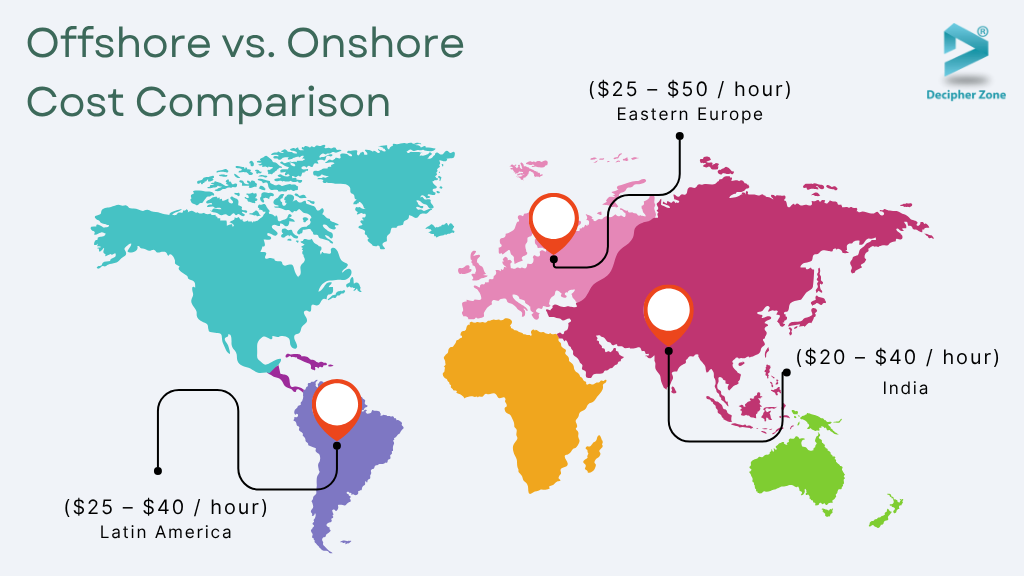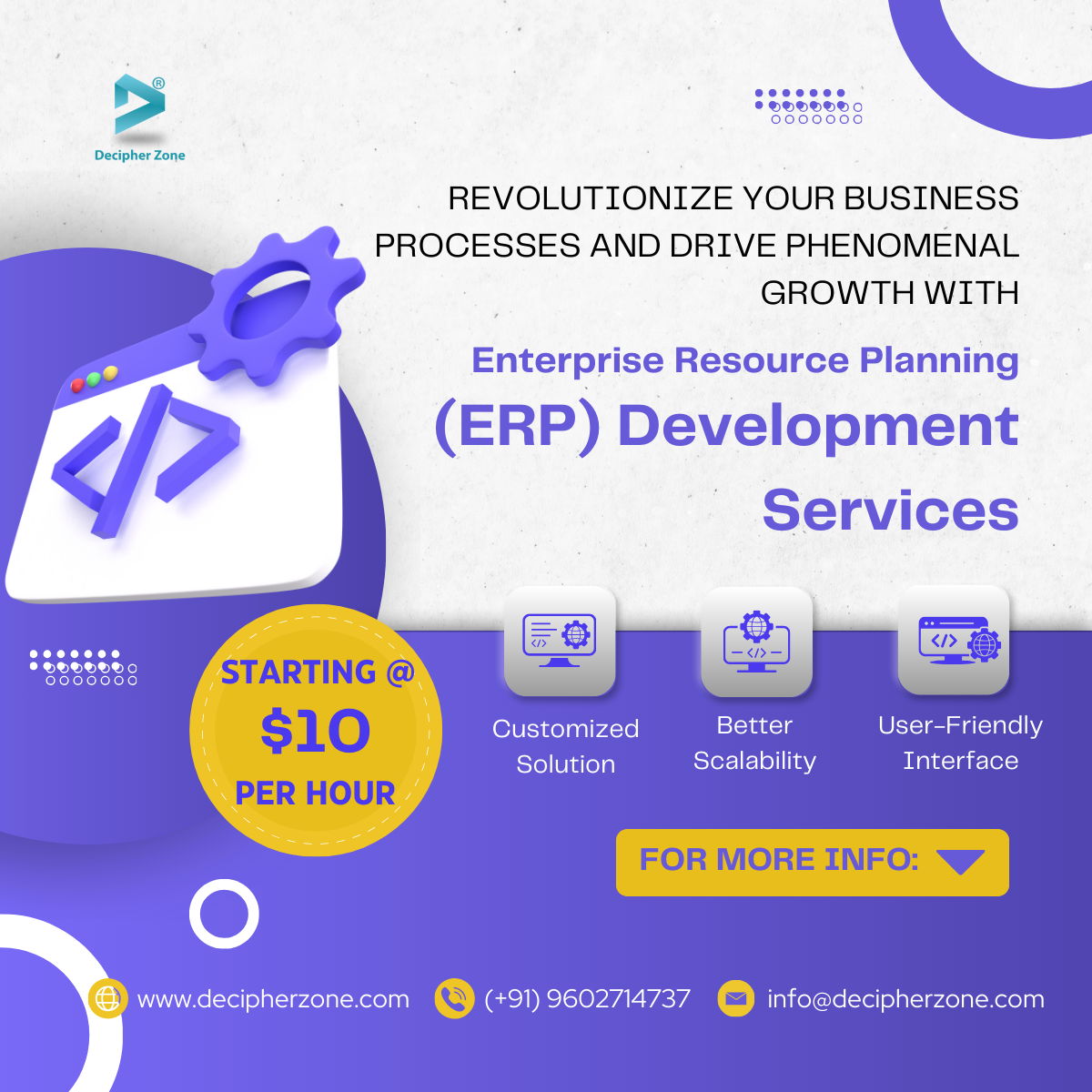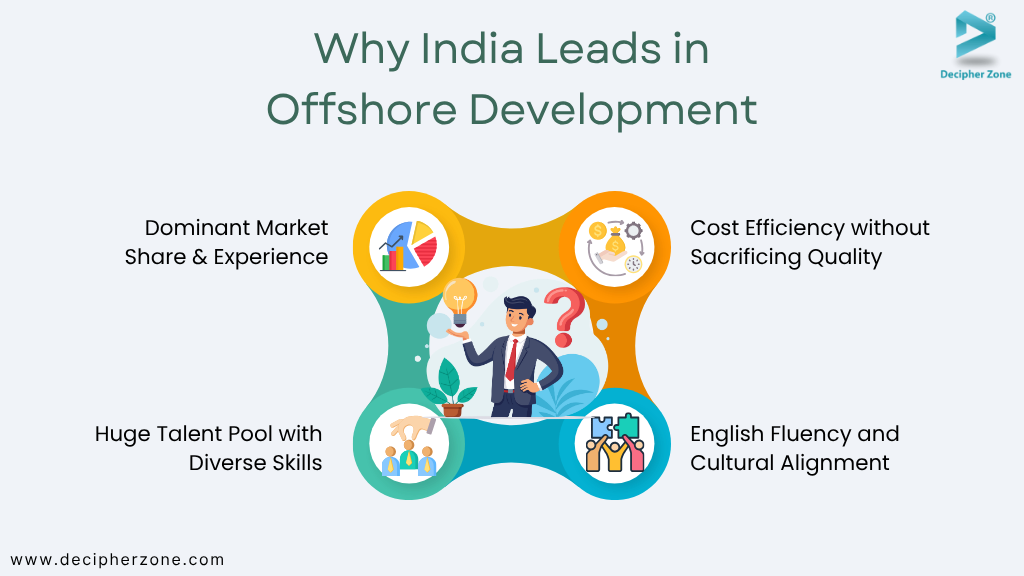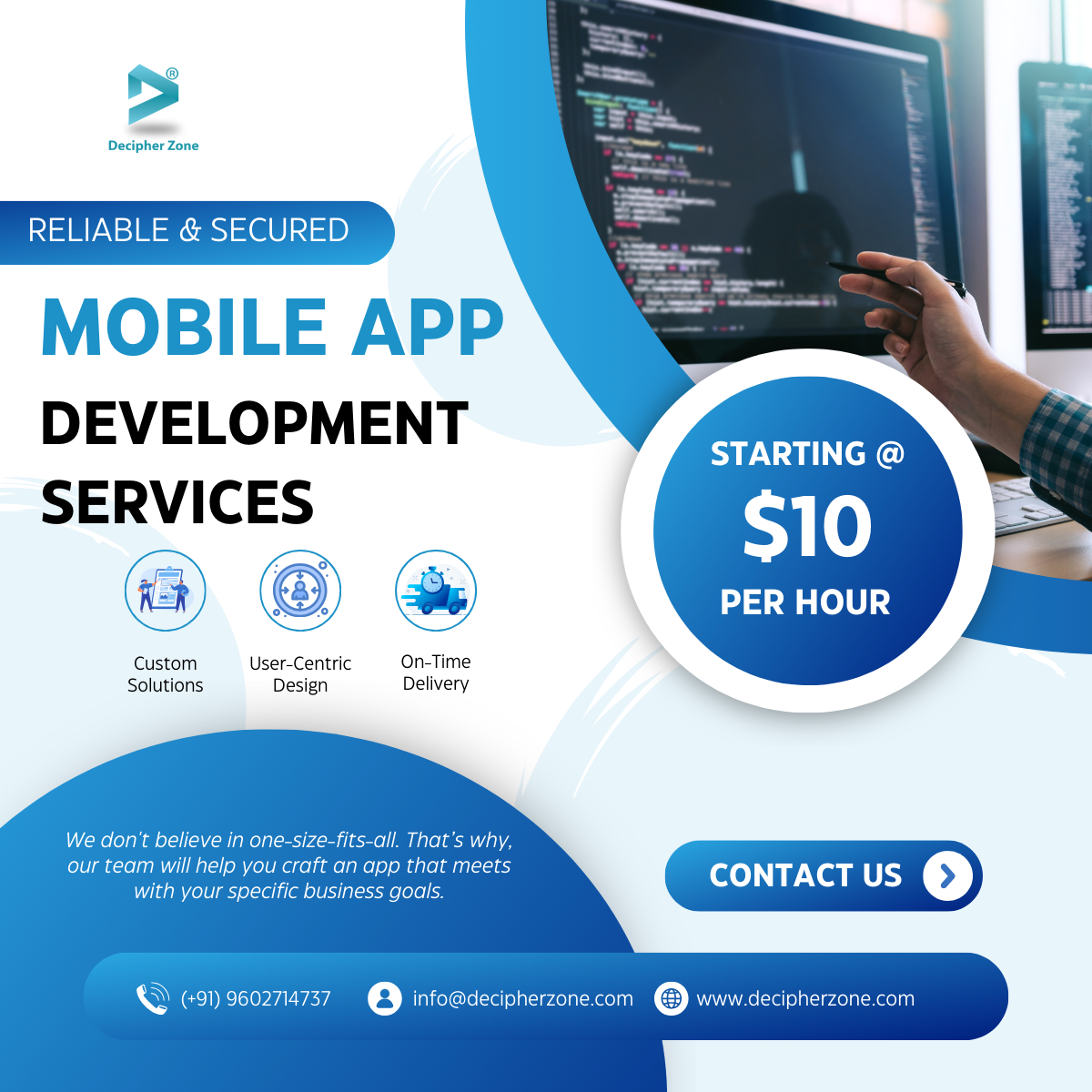Offshore software development has become a go-to strategy for U.S. startups, SMBs, and enterprises in 2025, offering significant cost savings and access to global tech talent. This comprehensive guide covers everything you need to know from key benefits (like up to 60% cost reductions and around-the-clock development) to choosing the right offshore development partner.
Offshore Software Development for USA Companies: 2025 Guide
Offshore software development – partnering with a software team in another country – has evolved into a cornerstone strategy for U.S. companies. By 2025, even lean startups are leveraging overseas talent to build products faster and more cost-effectively. The premise is simple: why hire one expensive local developer when you can hire a full offshore team for the same budget and tap into skills that might be scarce at home?
About 66% of U.S. companies already outsource at least one department, and software development is a prime candidate due to the sector’s high salaries and fierce talent competition in the U.S.
Tech hubs worldwide – especially India – brim with skilled engineers ready to contribute. As a result, offshore development isn’t just a trend; it’s a proven model fueling everything from healthcare platforms and fintech apps to e-commerce systems.
In this guide, we’ll break down the benefits of offshoring for U.S. businesses and address the practical considerations (like managing time zones and ensuring data security). You’ll see why India stands out as an offshore partner, with a brief look at how Eastern Europe and Latin America compare in talent, cost, English fluency, and time alignment.
Read: Offshore vs Nearshore
5 Benefits of Offshore Software Development
Why are so many U.S. companies embracing offshore development in 2025? Here are the key benefits driving this shift:
-
Significant Cost Savings
-
Access to Global Talent
-
Faster Time-to-Market (24/7 Development)
-
Scalability and Flexibility
-
Focus on Core Business
1. Significant Cost Savings
Lower labor costs are the most immediate benefit. Hiring developers in offshore hubs can be dramatically cheaper than hiring equivalent talent in the U.S. – often by 50% or more. On-site software development in the U.S. can cost up to 60% more than offshore development.
For example, if a senior developer in the U.S. costs $100/hour, an equally skilled developer in India might cost a fraction of that. These savings free up the budget for other investments (marketing, infrastructure, etc.) and can extend the runway for startups. In short, offshoring lets companies do more with less without sacrificing quality.

2. Access to Global Talent
Offshore development opens the door to a vast pool of specialized skills that may be hard to find or afford locally. According to Deloitte, improved access to talent has overtaken cost as the primary driver for outsourcing. By looking overseas, U.S. firms can hire experienced developers in fields like AI, blockchain, cybersecurity, or UX/UI design – the kind of experts that might be extremely scarce or expensive at home.
For instance, India alone had over 5.8 million software developers in 2021 (and that number keeps growing), supplying talent for virtually every technology stack and industry niche. This global talent availability helps companies fill roles faster and innovate with the right expertise on board.
3. Faster Time-to-Market (24/7 Development)
Faster Time-to-Market (24/7 Development): Working with teams in different time zones can actually speed up development cycles. Imagine your U.S. team logs off in the evening and an offshore team in India or Eastern Europe is just starting their workday your project progresses while you sleep. This “follow-the-sun” model enables near-24/7 productivity, which can be a game-changer for meeting tight deadlines.
In the competitive fintech and startup world, for example, getting to market even a few weeks sooner can make a big difference. Offshore teams often bring well-honed agile practices, and combined with around-the-clock development, companies can accelerate product timelines significantly. (One study noted that agile teams distributed globally can deliver projects up to 60% faster, thanks in part to continuous development cycles.)
4. Scalability and Flexibility
Offshore partnerships let companies scale their engineering capacity on demand. Need to quickly onboard 5 extra developers for a new project phase? An offshore development partner can allocate additional talent much faster than you could hire locally. Conversely, if a project is complete or priorities change, it’s easier to scale down an external team without the complications of local layoffs.
Partner with Decipher Zone for custom web app development — your offshore software experts.

This flexibility is especially valuable for startups and mid-size businesses that experience ebb and flow in development needs. It essentially turns software development into a variable cost – you pay for what you need, when you need it – and can adapt quickly to new opportunities or challenges.
5. Focus on Core Business
Offloading development work to a trusted offshore team allows your in-house staff to focus on what they do best – whether that’s product strategy, client relations, or core operations. Rather than stretching your small local team across development, QA, IT support, and more, you can have an external team handle the engineering heavy lifting.
Many companies find this leads to better overall productivity: your core team drives business value and innovation, while the offshore team executes the development tasks efficiently. Meanwhile, you still retain oversight and product ownership, but you’re not bogged down by every technical detail. This division of labor often results in a better product and a more agile business.
Read: Benefits of IT Outsourcing Services
Offshore vs. Onshore Cost Comparison
Offshore development is significantly more cost-effective than hiring local U.S. developers
|
Cost Element |
U.S. (Onshore) |
India (Offshore) |
Eastern Europe (Offshore) |
Latin America (Offshore) |
|
Average hourly rate (developer) |
$80 – $150+ / hour |
$20 – $40 / hour |
$25 – $50 / hour |
$25 – $40 / hour |
|
Hiring time (avg. for full team) |
2–3 months (due to local shortage) |
2–4 weeks (large talent pool) |
3–5 weeks |
2–4 weeks |
|
Infrastructure cost |
Borne by U.S. company (office, HW) |
Included in partner rate (no extras) |
Included in partner rate |
Included in partner rate |
|
Payroll taxes, benefits |
20%–35% overhead on salary |
Included in partner contract |
Included in partner contract |
Included in partner contract |
|
Scaling up/down flexibility |
Slower, more costly (local hire/fire) |
Fast scaling (partner provides talent) |
Moderate (smaller talent pool) |
Fast scaling (smaller pool but agile) |
|
Typical total cost savings |
— |
40%–60% savings vs. onshore |
30%–50% savings vs. onshore |
30%–50% savings vs. onshore |
By hiring offshore, a U.S. company can build products with high-quality code while controlling costs — often hiring two to four offshore developers for the price of one U.S.-based engineer.

Of course, cost isn’t the only factor in choosing an offshore partner, but it’s usually the initial rationale. Next, let’s explore how offshoring plays out in specific industries, where considerations like regulatory compliance and domain expertise also come into play.
Choosing the Right Offshore Development Partner
Here are essential steps and considerations when selecting an offshore development partner for your U.S. company:
-
Define Your Requirements Clearly
-
Evaluate Experience and Expertise
-
Check English Proficiency and Communication
-
Timezone and Overlap
-
Security and IP Protection
-
Cultural Fit and Work Practices
-
Start with a Pilot Project or Trial
-
Reference Checks and Reputation
-
Clear Contract and SLA
-
Alignment on Goals
The success of an offshore project hinges largely on the partner you choose. Not all offshore vendors are equal – you’ll want a partner that fits your technical needs, work culture, and business goals.
1. Define Your Requirements Clearly
Before you even approach potential partners, have a clear idea of what you need. What skills does your project require (e.g., mobile app development, UX design, AI/ML expertise)? How large of a team do you need, and for how long?

What are your must-haves in terms of quality, security, and timeline? By outlining the scope, tech stack, and objectives of your project, you can find a partner who is truly qualified to deliver. Clarity up front also prevents misunderstandings down the line.
2. Evaluate Experience and Expertise
Look for partners with a track record in your industry or the type of project you’re undertaking. If you’re building a healthcare app, does the offshore company have experience with healthcare clients or compliance like HIPAA? If it’s fintech, do they have fintech case studies?
Check their technical expertise: for example, if you need a React Native mobile app, does the team have certified or highly experienced React Native developers? Reputable partners will happily share portfolios and client references. Don’t just take glossy marketing brochures at face value – ask for real examples and perhaps speak to a past client if possible.
3. Check English Proficiency and Communication
Smooth communication is the lifeblood of a successful offshore engagement. Most developers in major offshore destinations speak English, but proficiency can vary. Ensure the team (especially project managers and leads) has strong English skills you should be able to have a detailed technical conversation without significant language barriers.
Pay attention to how responsive and clear they are in early communications; it’s a good indicator of future collaboration. Also clarify the communication channels and frequency: Will there be daily stand-up meetings via Zoom?
Get custom e-commerce development from experienced offshore teams.

What project management tools (Jira, Trello, etc.) will be used for task tracking? Establishing a cadence (like weekly demos or bi-weekly sprint reviews) helps keep everyone on the same page, literally and figuratively.
4. Timezone and Overlap
Figure out what kind of time difference you’re comfortable with and how the partner accommodates it. If real-time collaboration during U.S. hours is critical for you, you might favor a partner in Latin America (with minimal time difference) or ensure the partner in India/Eastern Europe can align a portion of their day with your morning hours.
Many Indian and Eastern European firms servicing U.S. clients will have adjusted work shifts or a second shift that covers U.S. mornings. For example, some Indian teams might work 12pm–8pm IST to have a few hours overlap with U.S. mornings.
Discuss and agree on an overlap schedule and communication protocol for off-hours. Remember, a bit of time zone difference isn’t all bad – as noted, it can be leveraged for continuous development – but you do want at least a daily window for live interaction.
5. Security and IP Protection
When engaging an offshore partner, you must safeguard your intellectual property and data. During your evaluation, ask pointed questions about how they handle security. Do they have security certifications like ISO 27001? What tools do they use to protect source code and data (VPNs, encrypted drives, etc.)?
Confirm they are willing to sign robust non-disclosure agreements (NDAs) and contracts that clearly assign IP ownership of the work product to your company. It’s wise to choose partners in countries with strong legal systems for IP protection.
For instance, India has stringent IP laws and has been a trusted destination for Fortune 500 companies’ R&D partly for that reason. Nonetheless, your contract should stipulate that all code, designs, and deliverables are your property. Including clauses about data privacy (especially if user data is involved) and requiring compliance with relevant regulations (like GDPR or HIPAA) is also important.
6. Cultural Fit and Work Practices
A partner’s work culture should complement yours. If your startup is used to Agile/Scrum, does the offshore team also practice agile methodology? Do they do daily stand-ups and two-week sprints? Is their team used to a flat hierarchy or a more rigid one? Understanding this will help avoid friction.
Also, consider cultural norms: for example, in some cultures, developers might be hesitant to openly say “no” or give bad news. You’ll want a partner that feels comfortable raising risks or delays early.
During initial talks, observe how candid and transparent they are. A good partner will act like an extension of your team, not just an outsourced vendor – that means being proactive with ideas and honest about challenges.
.avif)
7. Start with a Pilot Project or Trial:
No matter how much due diligence you do, nothing beats seeing the team in action. It’s often advisable to start with a small pilot project or a trial period before committing long-term. This could be a prototype, a small module of your larger project, or even a paid test assignment. Treat it like a real project: set requirements and timelines, and see how the team performs.
This will give you insight into their technical capability, communication, adherence to deadlines, and the quality of their output. If the pilot goes well, you can confidently ramp up the engagement. If not, it’s a relatively low-risk way to discover that this partner isn’t the right fit.
8. Reference Checks and Reputation
If possible, talk to other clients of the offshore firm (especially U.S. clients). Were they satisfied with the partnership? What challenges did they face? Also, a quick background check on the company how long have they been in business, how many developers do they have, what is their employee retention rate can be telling.
A company with very high turnover might pose continuity issues for your project. On the other hand, one with long-standing engineers and clients demonstrates stability.
9. Clear Contract and SLA
Once you’ve zeroed in on a partner, ensure the contract spells out all important terms. This includes the scope of work, delivery timelines, payment terms, confidentiality, IP rights, and warranties for bug fixes or post-launch support. It should also include a Service Level Agreement (SLA) if you expect ongoing support.
Discover powerful ERP solutions tailored for your business.

For example, how quickly they must respond to critical issues, or uptime commitments if they’re managing a product for you. A well-defined contract protects both parties and sets the tone for a professional engagement. It’s much easier to refer back to “Section 3.2 – Code Quality and Testing Standards” than to argue over what was assumed, should any dispute arise.
For IP protection, as mentioned, include clauses that any code or product developed is work-for-hire and owned by your company, and that the partner cannot use your proprietary code or ideas with other clients. Also, consider clauses about what happens if a key developer quits – will the partner provide a similarly qualified replacement at their cost? These details can be crucial for long projects.
10. Alignment on Goals
Finally, discuss your long-term vision with the potential partner. Are you looking for a short-term project or a long-term partnership to evolve your product? If the latter, gauge their enthusiasm for being a long-term partner.
Some offshore firms act more like consulting partners, contributing ideas to improve your product and business (this is ideal). Make sure they understand your business objectives, not just the technical tasks.
When your goals are aligned, the offshore team is more likely to make decisions in the project’s execution that serve your end goals, not just the letter of the requirements.
Read: Benefits of Hiring a Software Development Company
Offshore Destinations: India vs. Eastern Europe vs. Latin America
When you think of “offshore development,” a few regions probably come to mind. India has long been a leading destination, but Eastern Europe (countries like Ukraine, Poland, Romania) and Latin America (such as Mexico, Argentina, Brazil) are also prominent in outsourcing for U.S. companies. Each region offers distinct advantages.
Let’s do a light comparison of these regions on key factors that U.S. companies often consider:
|
Factor |
India (South Asia) |
Eastern Europe |
Latin America |
|
Talent Pool Size |
Extremely large – Over 5.8M developers and ~1.5M STEM grads added annually. Expertise in nearly all tech stacks. |
Large – Around 1.3M engineers. Countries like Poland and Ukraine have strong coding/math traditions. |
Moderate but growing – 1–2M developers region-wide. Talent pool expanding with tech education focus. |
|
Typical Rates |
Most affordable – Around $20–$40/hour. India offers some of the world’s most cost-effective development rates. |
Mid-range – Around $25–$50/hour. Still lower than U.S. rates. Niche skills may cost more. |
Mid-range – Around $25–$40/hour. Rates vary by country; competitive for nearshore value. |
|
English Proficiency |
High – Strong written English, good spoken. Decades of experience working with U.S./UK clients. |
High – Tech workers have very good English; many also speak other European languages. |
Moderate – Varies by country. Argentina/Chile score higher; Brazil/Mexico may need clearer comms. |
|
Time Zone Alignment |
Low overlap – 9.5–12 hours ahead of U.S. Real-time sync limited, but great for overnight progress. |
Moderate overlap – 6–9 hours ahead. Enables half-day real-time collaboration. |
High overlap – Within 0–3 hours of U.S. time. Seamless real-time work ideal for agile teams. |
Finally, remember that within each region, individual countries (and companies within those countries) can differ. It’s wise to do micro-comparisons too: India vs. Vietnam, or Ukraine vs. Poland, or Mexico vs. Brazil, depending on where you’re drawn. But those nuances aside, the table above gives a general lay of the land.
Why India Leads in Offshore Development
Let’s break down why India is often considered the ideal offshore development partner:
-
Dominant Market Share & Experience
-
Huge Talent Pool with Diverse Skills
-
Cost Efficiency without Sacrificing Quality
-
English Fluency and Cultural Alignment
-
Proven Innovation and Big-Name Trust
-
Scale and Bandwidth
-
Government and Infrastructure Suppor
-
Innovation and Startup Culture
India has long been synonymous with offshore IT services, and it continues to lead the global offshore market by a wide margin. For U.S. companies, India offers a combination of advantages that is hard to beat.
1. Dominant Market Share & Experience
India isn’t just one option among many – it’s the epicenter of offshore software development. The country accounts for an estimated 55%+ of the global IT outsourcing market. In terms of U.S. partnerships, roughly half (or more) of U.S. companies that outsource software development work with Indian teams.
This decades-long experience means Indian firms have refined their processes to meet Western clients’ needs. Many of the largest Indian IT companies (TCS, Infosys, Wipro, etc.) have worked with Fortune 500 clients for 20-30 years, creating a deep well of industry know-how.

Even smaller Indian boutique firms benefit from this ecosystem – it’s common to find Indian developers who’ve been collaborating with U.S. clients for their entire careers. This maturity translates into project management excellence, reliable delivery, and familiarity with U.S. business expectations.
2. Huge Talent Pool with Diverse Skills
India’s tech talent pool is second to none in size. Beyond the 5.8 million+ software developers already in the workforce, the country produces around 1.5 million engineering graduates each year, a significant portion of whom enter IT.
This means if you need a rare skill or to scale a team quickly, India is often the place to find those people. Whether it’s mainstream technologies (Java, Python, JavaScript frameworks) or niche areas (say, a MATLAB expert for an engineering simulation, or an SAP HANA certified consultant), chances are high that India has specialists available. Moreover, Indian developers are known for their adaptability they often cross-train in multiple technologies.
Many Indian outsourcing firms encourage continuous learning, so a company might have, say, a pool of cloud developers who are also getting certified in data science or cybersecurity. The bottom line: no other country offers the breadth and depth of IT skills that India does at scale.
3. Cost Efficiency without Sacrificing Quality
We discussed cost earlier – India offers some of the most competitive rates globally. But it’s crucial to highlight that cost savings in India don’t mean “cheap work.” In fact, many Indian developers are world-class.
Indian outsourcing companies maintain quality through frameworks like CMMI (Capability Maturity Model Integration a process level improvement training and appraisal program) and ISO certifications. India was one of the first countries where companies achieved CMM Level 5 (the highest level) back in the early 2000s, indicating very mature software engineering processes.
The result is that you often get high-quality output at a fraction of the U.S. cost. This value proposition – quality at scale for less – is India’s hallmark. A small U.S. business can, by partnering in India, afford top-tier architects, developers, QA, and support that would be simply out of reach budget-wise if all hired locally.
4. English Fluency and Cultural Alignment
English is one of India’s official languages and is the primary language of its IT and higher education sectors. Thus, Indian developers typically communicate in English comfortably. Beyond language, there’s a reasonable level of cultural compatibility when it comes to professional settings.
Indian IT professionals are accustomed to Western work culture, often aligning their holidays with U.S. project deadlines (many will even work on Indian public holidays if a critical U.S. release is scheduled with compensation, of course). There’s also a customer-service ethos ingrained due to the outsourcing industry’s growth; Indian teams often go the extra mile to meet client needs.
Let’s create it together! Mobile app development services from concept to launch.

If any cultural differences do arise (for example, a tendency to sometimes say “yes” to ambitious timelines to please the client), a good working relationship and open communication usually iron those out.
Many U.S. companies also appreciate that Indian partners often assign an onsite coordinator or project manager who acts as a bridge in the U.S. timezone, further smoothing communication.
5. Proven Innovation and Big-Name Trust
It’s not just about cost, India has proven its capability in delivering complex, innovative projects. Global tech giants and Fortune 500 companies heavily invest in India. Companies like Microsoft, Google, IBM, and Oracle have large R&D centers in India. In fact, global giants like JPMorgan Chase, Microsoft, Airbus, and HSBC have established major Global Capability Centers (GCCs) in India.
These are essentially captive offshore development centers because they recognize the talent and innovation available. When you partner with an Indian firm, you’re tapping into the same talent pool that these top companies trust with their core projects.
For example, parts of Windows, Google’s products, and global banking platforms have been built or are maintained out of India. This demonstrates confidence in Indian developers’ ability to handle mission-critical, cutting-edge work. Knowing that the likes of Walmart, Apple, and other Fortune 500s rely on Indian tech expertise should give smaller companies confidence that they can too.
6. Scale and Bandwidth
If your project suddenly needs to expand, India is where you can find the manpower to scale quickly. Say your startup enters hyper-growth and you need 20 more developers. An Indian partner can often pull in additional vetted engineers rapidly, either from their bench (many firms keep a bench of available talent) or by tapping the local job market which is rich with experienced contractors.
.avif)
This elasticity is a lifesaver for fast-growing companies. Conversely, if you need to scale down after a release, Indian contracts are usually flexible enough to accommodate that. The ability to scale teams up or down relatively painlessly is a big plus.
7. Government and Infrastructure Support
The Indian government and industry bodies have long supported the IT sector. There are tax incentives for IT parks, robust data networks linking major city hubs, and legal systems that enforce IT contracts and IP protection.
Many Indian cities (Bangalore, Hyderabad, Pune, Chennai, Jaipur etc.) have world-class IT infrastructure – high-speed internet, reliable power (with backups), and even special economic zones dedicated to tech businesses.
Travel to India for on-site visits is straightforward, with English signage everywhere and a hospitable environment for foreign clients.
Over the years, the IT industry has created a complete ecosystem from specialized IT law firms to training institutes that underpins successful offshore collaboration. This means when you partner with an Indian company, they operate in an environment optimized for outsourcing success.
8. Innovation and Startup Culture
While India is renowned for outsourcing, it’s also experiencing a tech startup boom of its own. This cross-pollination means a lot of Indian developers working for you might also have experience or exposure to product innovation and startup mindset.
They’re not just order-takers; many are creative problem solvers who can suggest improvements to your product. Culturally, there’s a strong emphasis on STEM and problem-solving skills (the reason Indian kids dominating spelling bees is often cited humorously, but it reflects a broader rigorous education ethos).
So, you often get a team that’s eager to contribute ideas and not just churn out code. If you encourage that kind of input, you may find your offshore team becomes an integral part of your innovation engine.
Read: Outsourcing Strategies for 2025
Conclusion and Next Steps
Offshore software development has proven to be a strategic game-changer for U.S. companies. In this guide, we’ve explored how offshoring can unlock cost savings, connect you with world-class talent, and compress development timelines all critical advantages in today’s fast-paced, digital-first economy.
We’ve also looked at how these benefits play out in healthcare, fintech, and retail, three industries where the ability to innovate quickly (and cost-effectively) can determine market leaders.
Hire skilled developers for Java, React, full-stack, and more.

By now, a few key takeaways should be clear:
1. Plan and Partner Wisely
Offshoring isn’t without its challenges – success requires choosing the right partner and setting up the relationship for success (clear goals, good communication, security measures, etc.).
But with those elements in place, even highly regulated or complex projects can thrive offshore. Many companies that were initially hesitant about outsourcing have become advocates after seeing their projects delivered on time and under budget by a dedicated remote team.
2. India – A Preferred Destination
While quality talent exists around the world, India’s combination of experience, scale, and cost efficiency makes it a top choice for U.S. firms. It’s no coincidence that companies from startups to Fortune 500s consistently tap into Indian teams for their critical projects.
Of course, if your priorities tilt differently (like needing same-time-zone collaboration), regions like Eastern Europe or Latin America are excellent complements or alternatives.
Some of the most effective strategies use a blend – for example, an Indian team for core development and a Latin American team for UX design and closer collaboration. The beauty of the offshore model is that you can tailor it to your needs.
3. Risk Mitigation
Common fears like “will my data be safe?” or “what if they don’t understand our requirements?” can be mitigated by best practices. Legal safeguards (NDAs, IP clauses) and technical measures (VPNs, access control) protect your sensitive information.
Regular meetings, travel (if feasible) for key kickoffs, and perhaps an onshore liaison or project manager ensure requirements are understood and the team feels connected to your mission. Remember that most offshore partners stake their business on reputation and long-term relationships – it’s in their interest as much as yours to deliver quality and uphold trust.
4. Results Speak Loudest
At the end of the day, the rise of offshoring is driven by results. Projects that might have been shelved due to high domestic dev costs are getting done – and done well – offshore. Companies are launching products faster than competitors by using a follow-the-sun approach.
And they’re doing this while often staying within tight budgets. We cited stats like 60% cost savings and noted that 80% of executives plan to maintain or increase outsourcing these figures reflect the tangible success companies are experiencing with offshoring.
So, are you ready to explore an offshore partnership? This could be the moment that propels your project or product to the next level. Start by evaluating your needs and dipping your toes in – perhaps a pilot project with a highly recommended offshore firm. Many companies find that once they try it and iron out the initial kinks, they wish they’d embraced offshoring sooner.

Ready to accelerate your software development while optimizing costs? Explore an offshore partnership today. By teaming up with the right offshore development partner whether in India’s tech hubs or other talent-rich regions you can turn ambitious ideas into reality faster and more efficiently.
Don’t let budget or resource limits stall your innovation. It’s time to tap into global expertise, build that game-changing product, and take your business to new heights. The world is your talent pool – dive in and make the most of it!
FAQs
1. Is offshore software development from India safe for U.S. companies?
Yes. Trusted Indian partners follow ISO 27001, HIPAA, and GDPR to protect U.S. client data.
2. How much can U.S. startups save with offshore software development?
On average, U.S. startups save 40%–60% by hiring offshore teams in India.
3. How do U.S. businesses manage time zones with India-based developers?
U.S. firms set overlap hours (e.g., U.S. mornings, India evenings) and use tools like Slack or Zoom.
4. Why is India better than Eastern Europe or Latin America for offshore software?
India offers the largest tech talent pool, competitive rates, and excellent English skills, ideal for U.S. companies.
5. Can I scale an offshore team in India quickly for my U.S. project?
Yes. Indian partners typically scale teams in 2–4 weeks, faster than local U.S. hiring.

